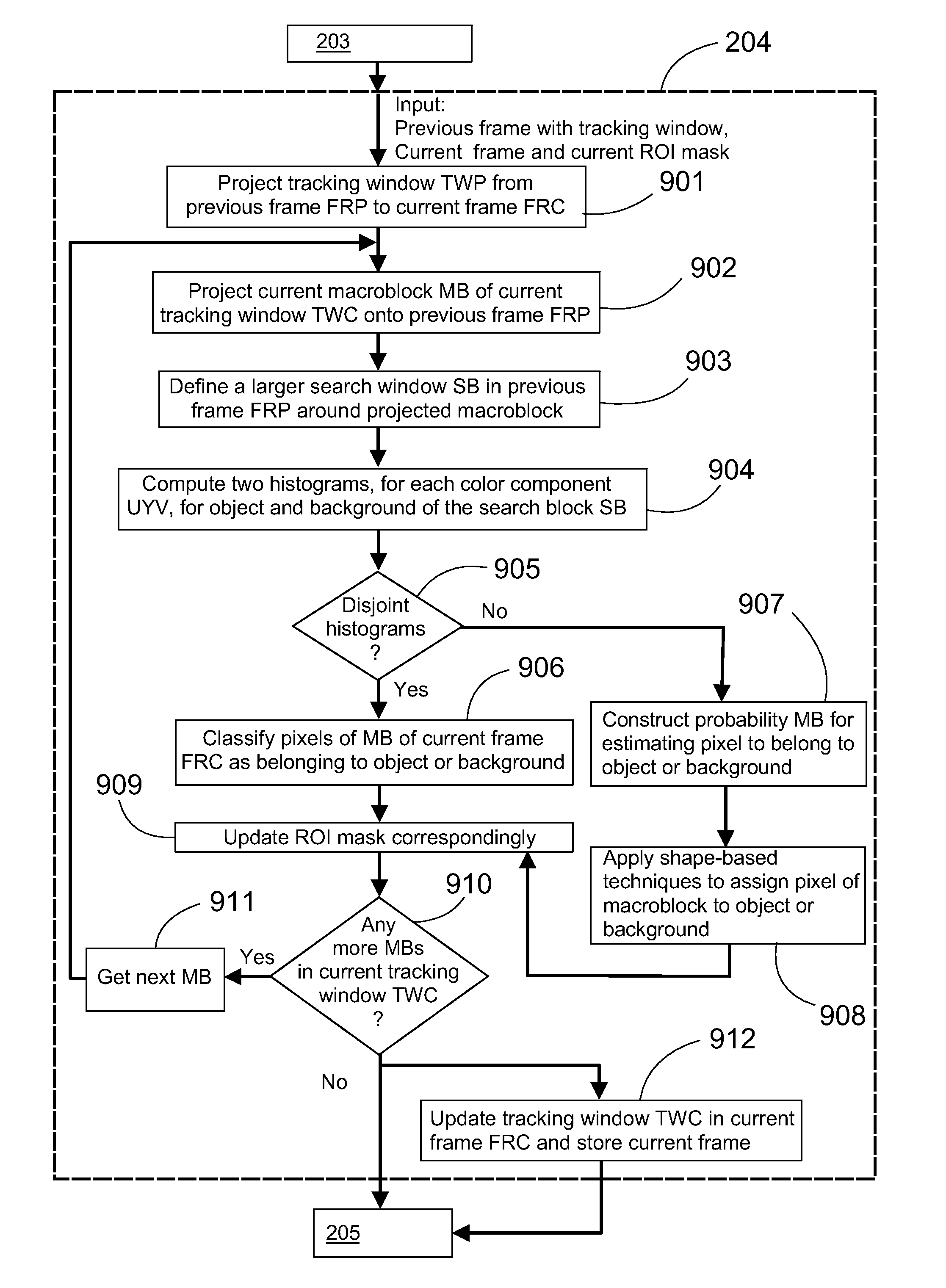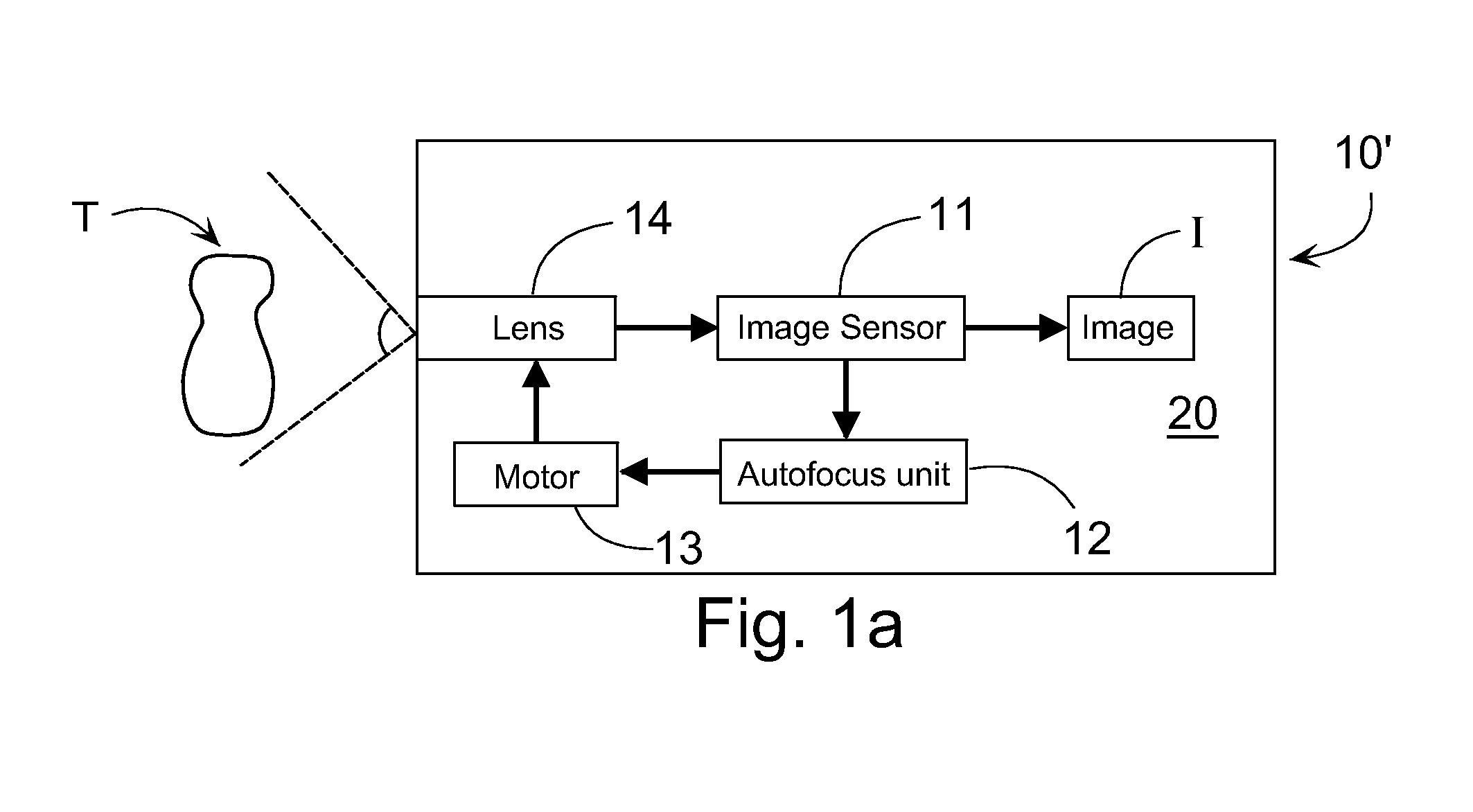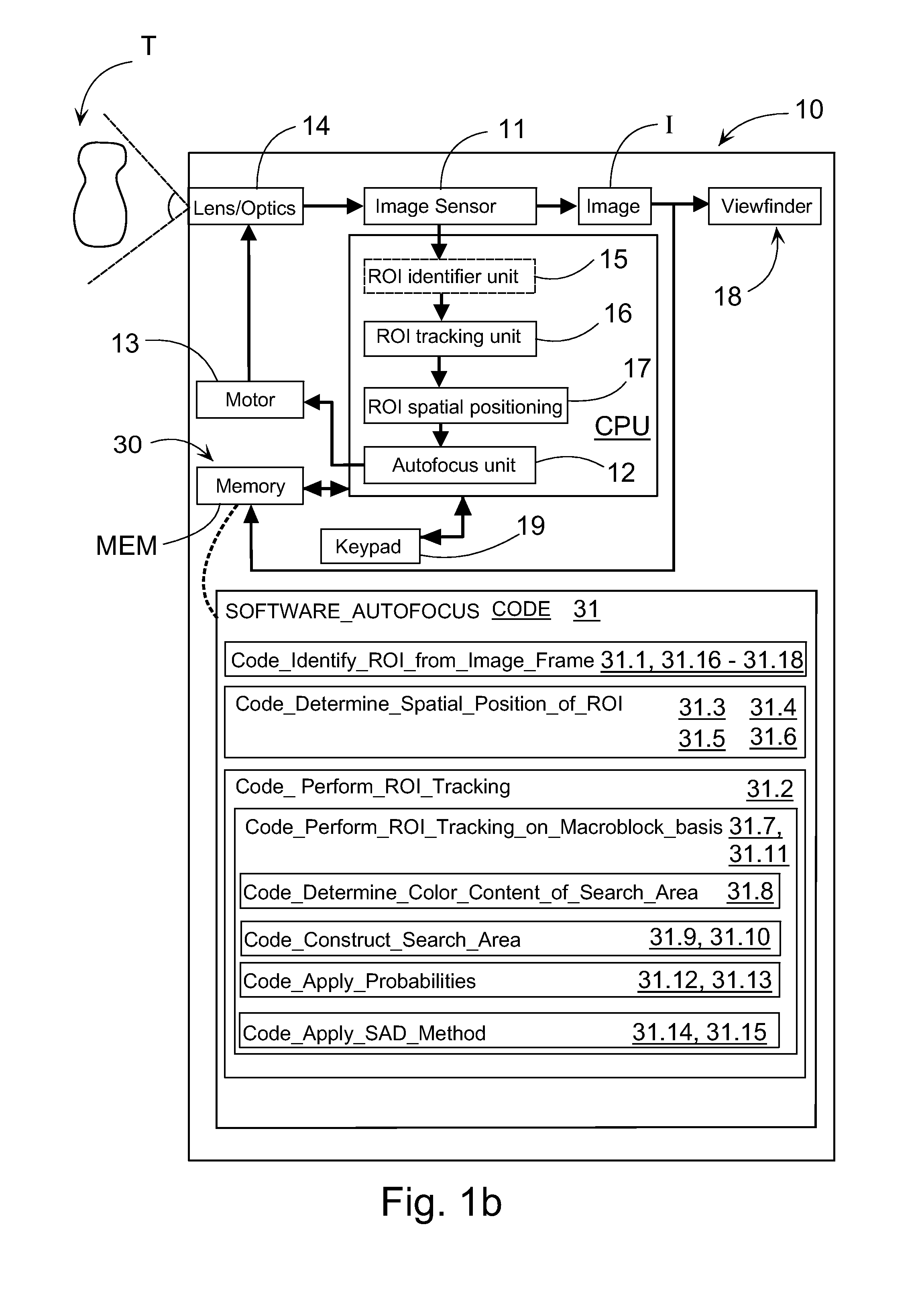Method and device for controlling auto focusing of a video camera by tracking a region-of-interest
a video camera and auto focusing technology, applied in the field of video camera auto focusing control by tracking a region of interest, can solve the problems of inability to apply methods in the general case of target identification, difficulty in detecting the reflected wave of the camera, and inability to automatically identify the target, etc., to achieve low computational complexity, simple shape matching procedure, and low computational complexity
- Summary
- Abstract
- Description
- Claims
- Application Information
AI Technical Summary
Benefits of technology
Problems solved by technology
Method used
Image
Examples
Embodiment Construction
[0048]Nowadays, many electronic devices 10 include camera means 11. Besides digital video cameras, examples of such devices include mobile stations, PDA (Personal Digital Assistant) devices, and similar ‘smart communicators’ and also surveillance cameras. In this connection, the concept ‘electronic device’ can be understood very widely. For example, it can be a device, which is equipped, or which can be equipped with a digital video imaging capability. In the following, the invention is described in connection with a mobile station 10, by way of example.
[0049]FIG. 1b shows a rough schematic example of the functionalities in a device 10, in as much as they relate to the invention. The camera means of the device 10 can include the functional components or sub-modules 11-14, which are, as such known, shown in FIG. 1b and already described in connection with FIG. 1a in the prior art section. These modules 11-14 form a loop architecture, which is performed continuously in connection with...
PUM
 Login to View More
Login to View More Abstract
Description
Claims
Application Information
 Login to View More
Login to View More - R&D
- Intellectual Property
- Life Sciences
- Materials
- Tech Scout
- Unparalleled Data Quality
- Higher Quality Content
- 60% Fewer Hallucinations
Browse by: Latest US Patents, China's latest patents, Technical Efficacy Thesaurus, Application Domain, Technology Topic, Popular Technical Reports.
© 2025 PatSnap. All rights reserved.Legal|Privacy policy|Modern Slavery Act Transparency Statement|Sitemap|About US| Contact US: help@patsnap.com



